I spoke with different GTM experts to learn how they use Clay for ABM.
And, I’ve pulled together their best insights (and shared step-by-step workflows) to inspire you to start using Clay the same way.
Creating Target Account Lists Using Clay’s Discovery Features
Clay integrates with over 100 data sources, including B2B databases, social platforms, and enrichment tools, enabling you to build detailed and accurate account lists tailored to your ICP.
Taylor Haren, founder of Sales Automation Systems and Clay expert, uses Clay to scrape social platforms for account lists.
For one campaign, he scraped Instagram pages with “medical spa” and related keywords along with email IDs. Turns out, it was one of his most successful ABM campaigns to date.
How to Do This in Clay?
Note: Taylor’s use case is a little advanced for beginners. If you’re just getting started with Clay, watch this short tutorial on how to build lists.
Note: Clay doesn’t offer a native Instagram integration for finding profiles/emails/bios using keywords or hashtags. For this, you’d need the help of scraper tools like PhantomBuster or Apify. I’ll explain through the latter.
- Create an Apify account and go to the Apify Store. Search for “Instagram” to see available actors (data scrapers). I used the Instagram Hashtag Scraper to find profiles of companies selling vegan makeup brushes. You can also try Instagram Scraper or Instagram API Scraper if you prefer keyword-based searches, like Taylor did.
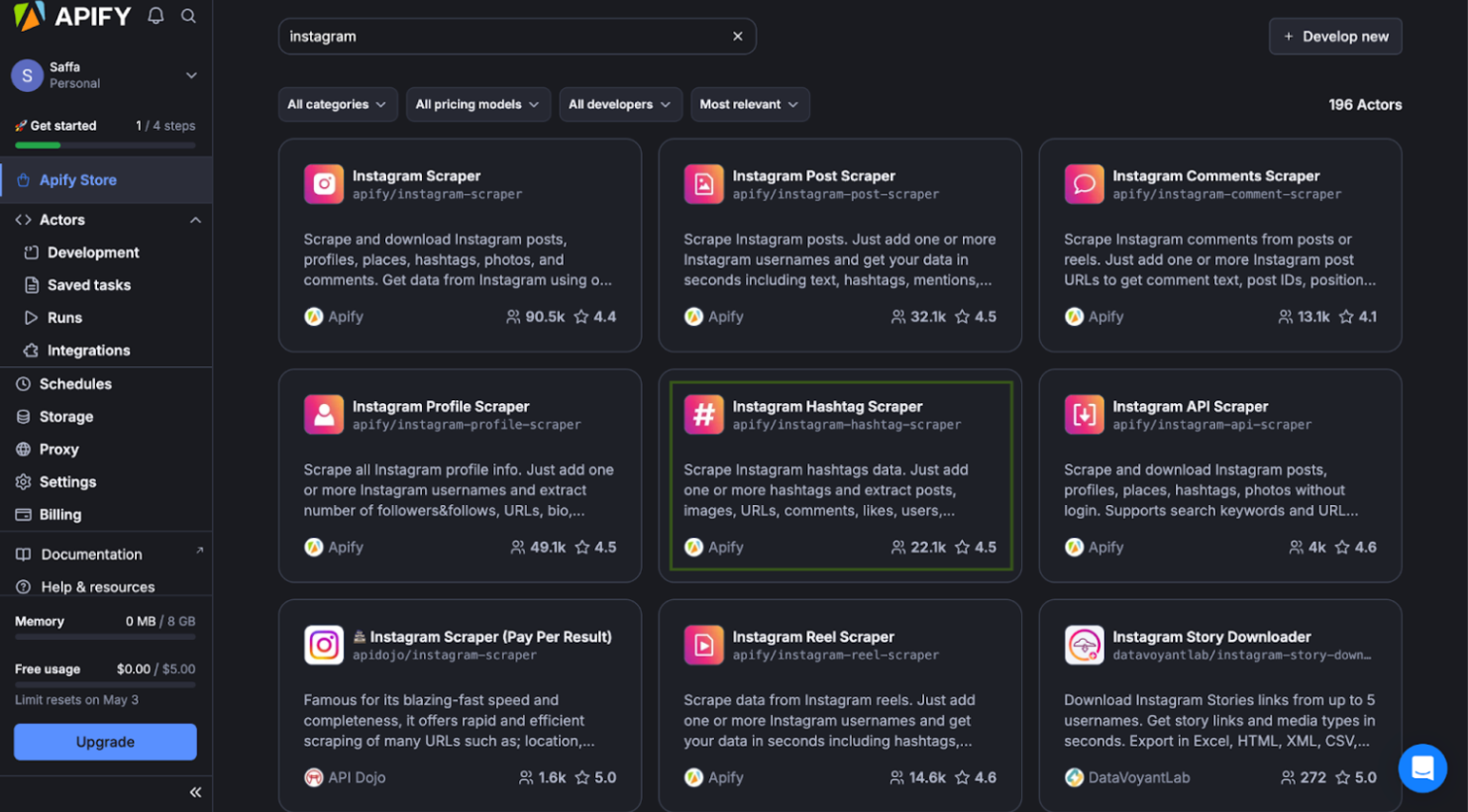
- Add the hashtags you want to search, #veganmakeupbrushes in this case. Click “Save & Start” to begin the scrape.
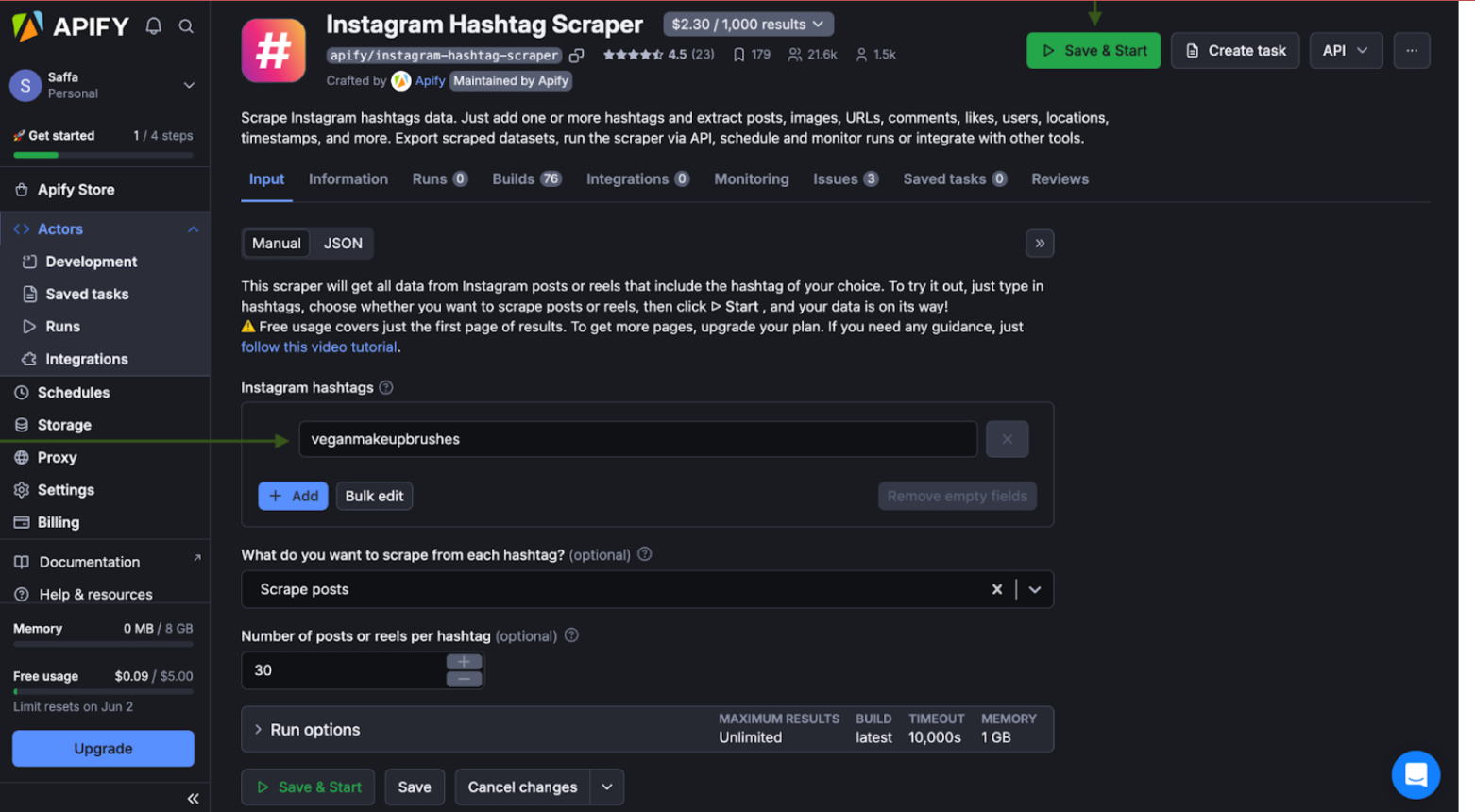
- Go to Clay and create a new table by choosing the option “Import data from Apify actor”.

- Connect to your Apify account and add in details to bring the data to Clay. Choose the relevant Apify actor and choose the specific version of the run you want to include. Click on “Submit.”
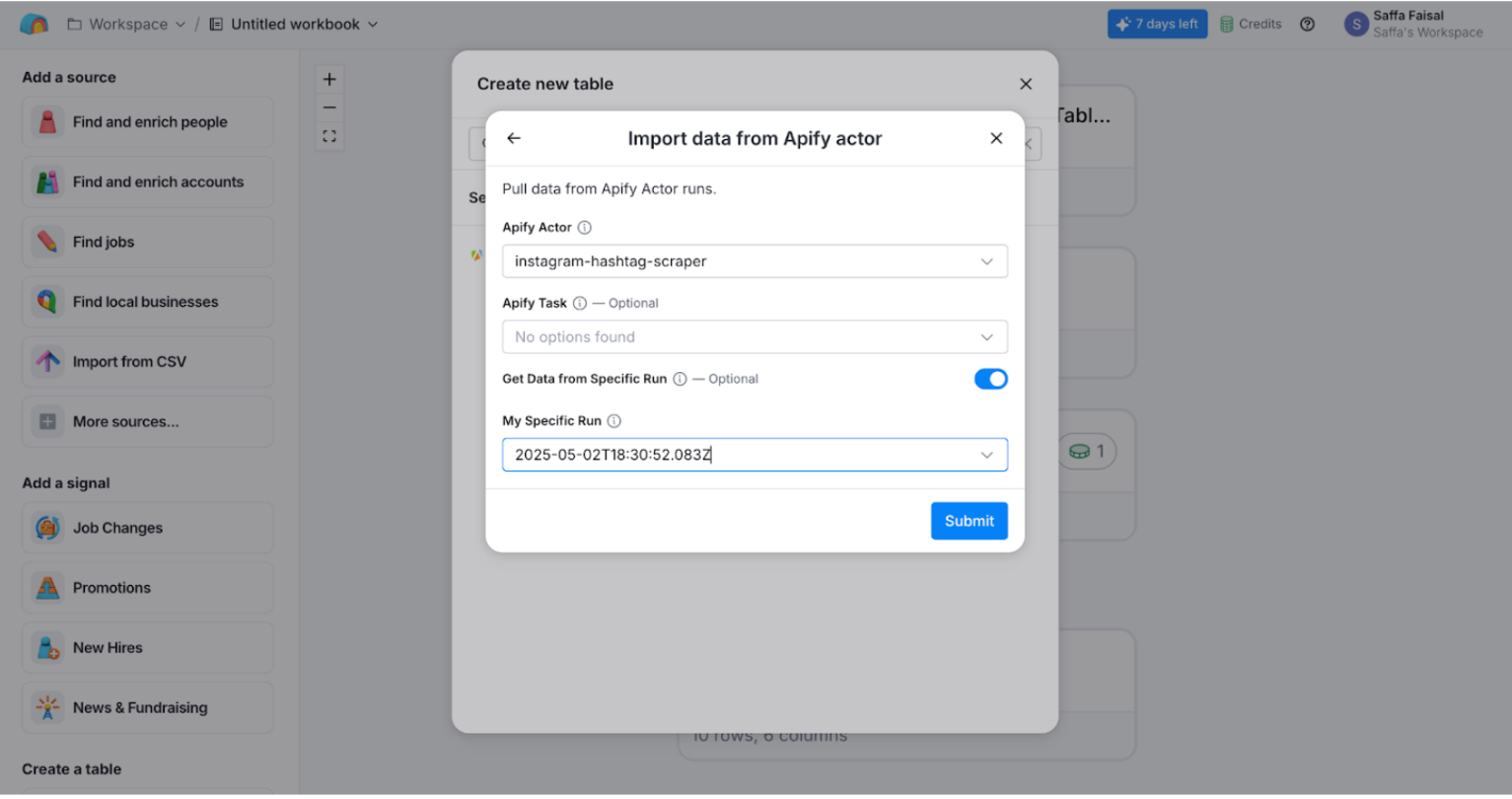
- The data will appear in a compressed view. Click any Apify Record cell to expand and see the scraped details.
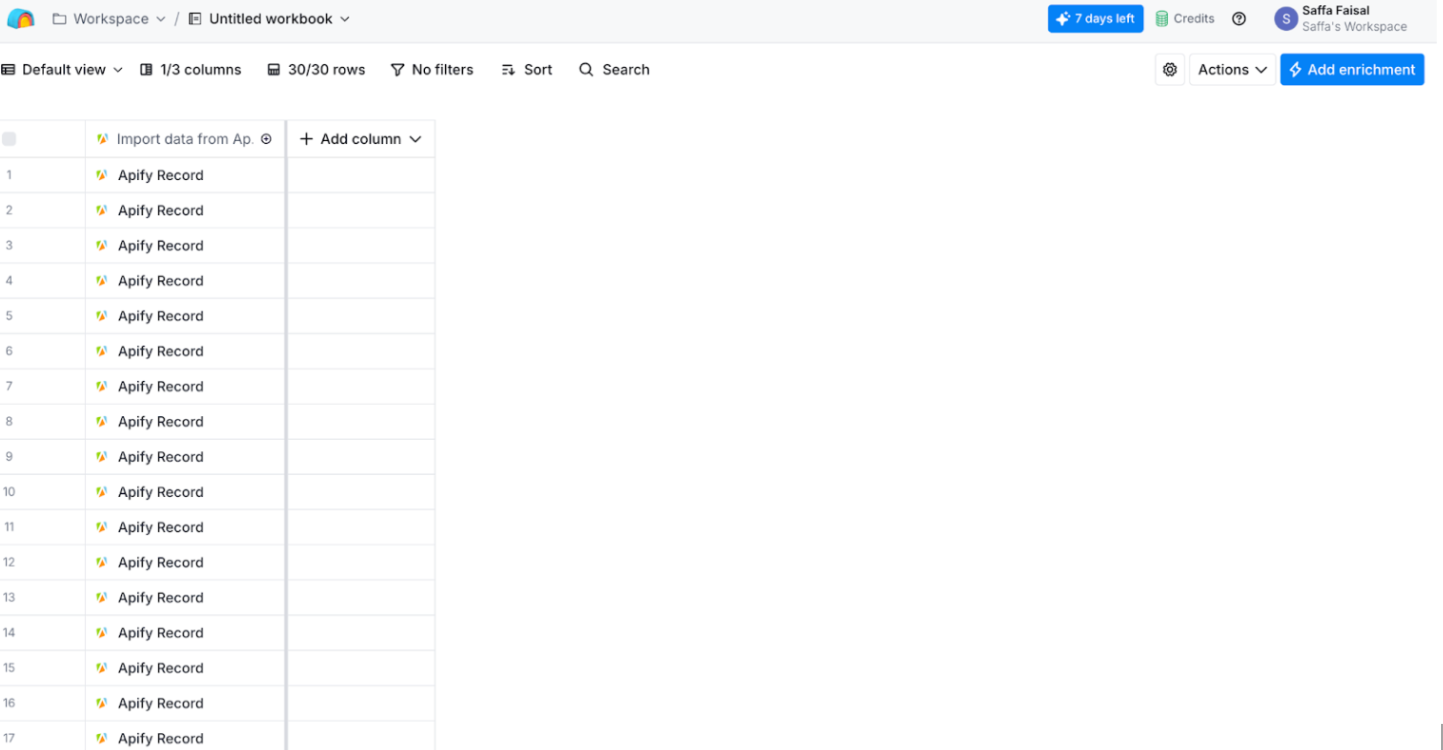
- Only make visible the columns you need. Since I want to find and connect with companies that sell vegan makeup brushes, I need the Instagram profile username, profile name, caption of the post/reel where the hashtag appeared, and a link to it as well.
- Add missing emails using Clay’s enrichment feature. Choose “Personal Email (from social media)”, specify Instagram, and enter the username column. Click “Save.”
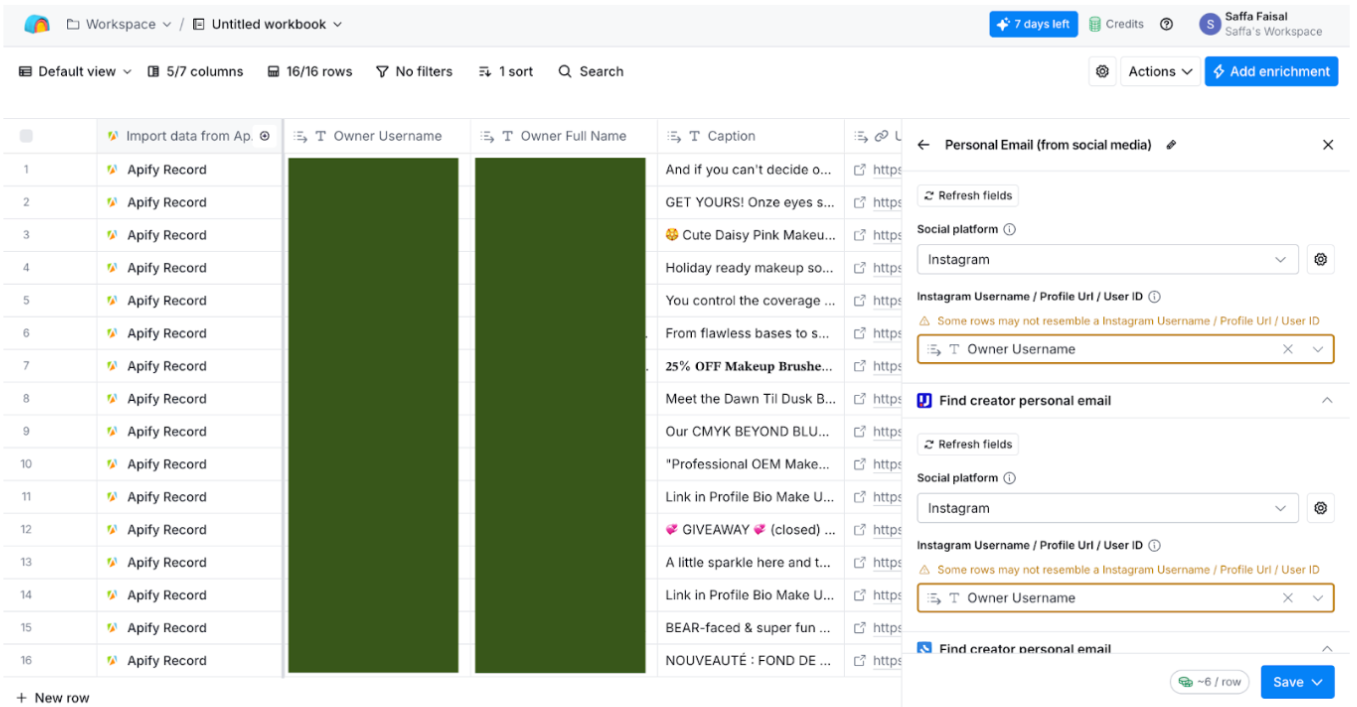
- You now have the essential information to start personalizing your copy and kicking off outreach.
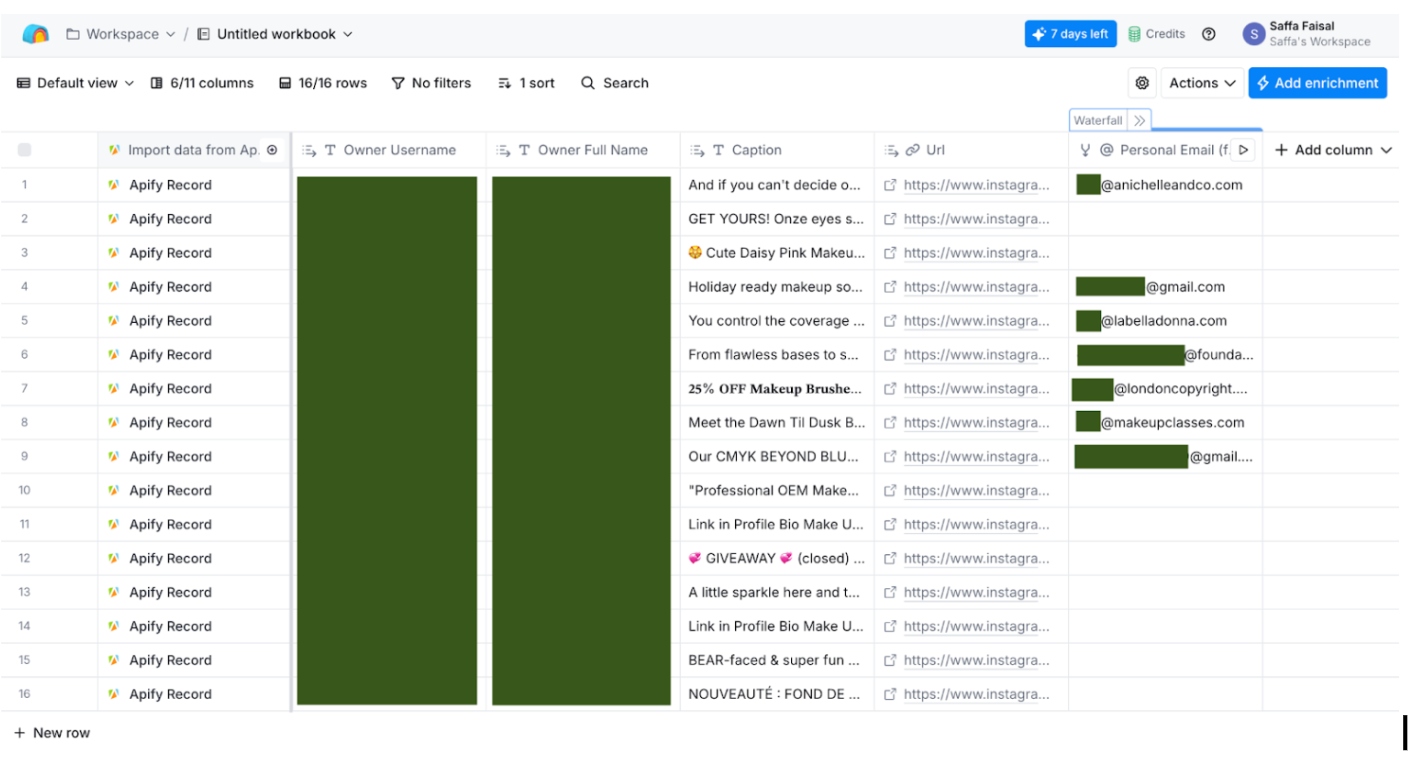
Finding Your Competitor’s Customers to Target Them
A proven ABM strategy is targeting your competitors’ customers and showing them why you’re the better choice. Clay helps you do this at scale by finding companies featured on competitor websites and case study pages, enriching their data, and automating outreach.
Step-by-step workflow below ↓
How to Do This in Clay?
- Create a new Clay table and add competitor names and URLs if you have them. Or ask Claygent to help you with this.

- Click “+Add column” → “Use AI”

- In the Prompt section, add instructions for Claygent to find you a list of companies mentioned on the competitor’s website, mainly the case studies or testimonial pages. Save yourself time and use the prompt below, and click on “Generate my prompt.””#CONTEXT#
You are tasked with extracting structured data from the website of /Domain. The goal is to identify companies that have been featured in case studies or mentioned in testimonials on the site.#OBJECTIVE#
Extract and return the names of 5 customers of #Domain as a comma-separated list.#INSTRUCTIONS#
1. Use the #Domain to locate the company’s official website and relevant web pages that list their customers.
2. Search for sections like “Case Studies,” “Our Customers,” “Clients,” or similar headings that often list company clients.
3. Extract up to 5 customer names from these sections.
4. Ensure that the extracted names are verified as the company’s customers through contextual clues or mentions in official sources.
5. Return the names as a comma-separated list (e.g., “Customer1, Customer2, Customer3, Customer4, Customer5”).#EXAMPLES#
Example Input: “example.com” Example Output: “Customer1, Customer2, Customer3, Customer4, Customer5″#REMINDERS#
– Only retrieve information from legitimate company sources or verified partners.
– Do not assume customer names from unrelated or unverifiable sources. Keep the response concise, free of extra commentary. Return “No customers found” if no information about customers is available.”
- This will open a pop-up window, asking you to confirm your goal. Click “Generate,” and then “Accept” once the prompt looks right.
- Make sure you’ve selected “Fields” in the “Output Format” section. Click on “Save and Run” to view the list of companies for each competitor.
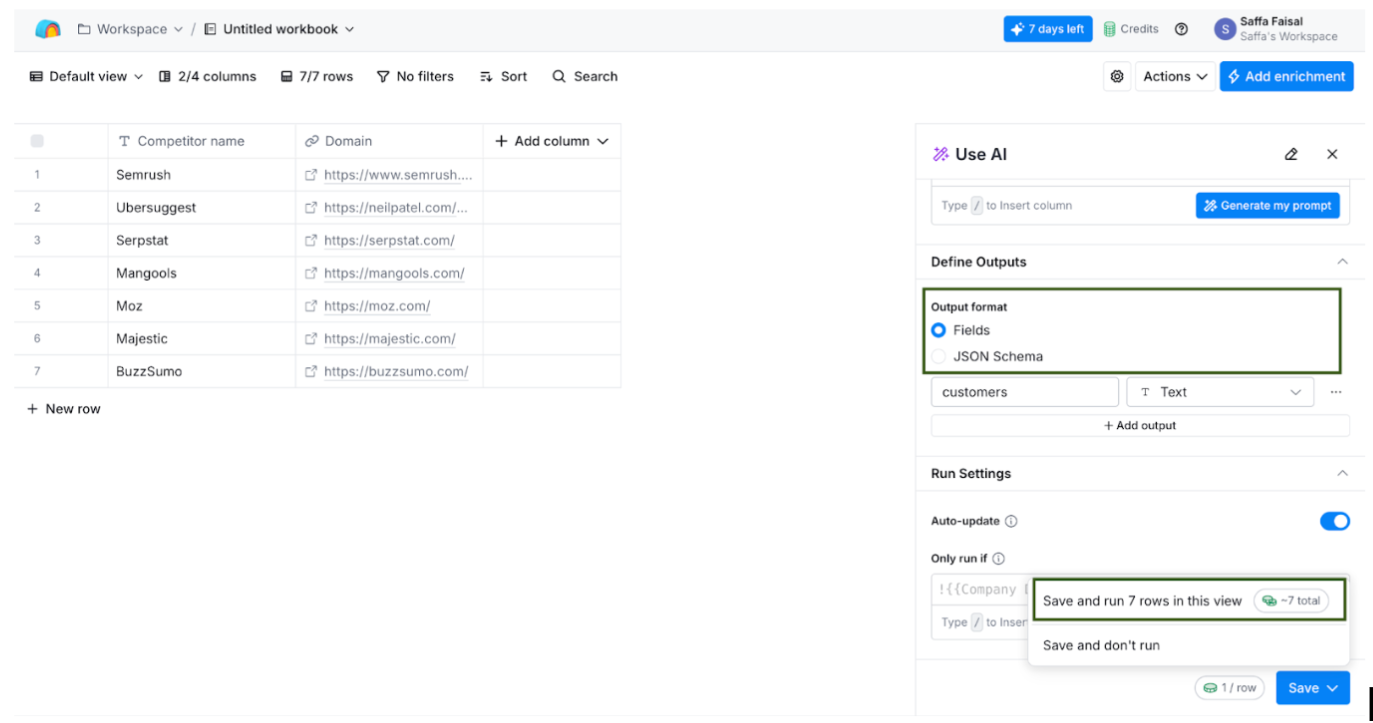
- You’ll now see a list of companies featured on your competitors’ websites:
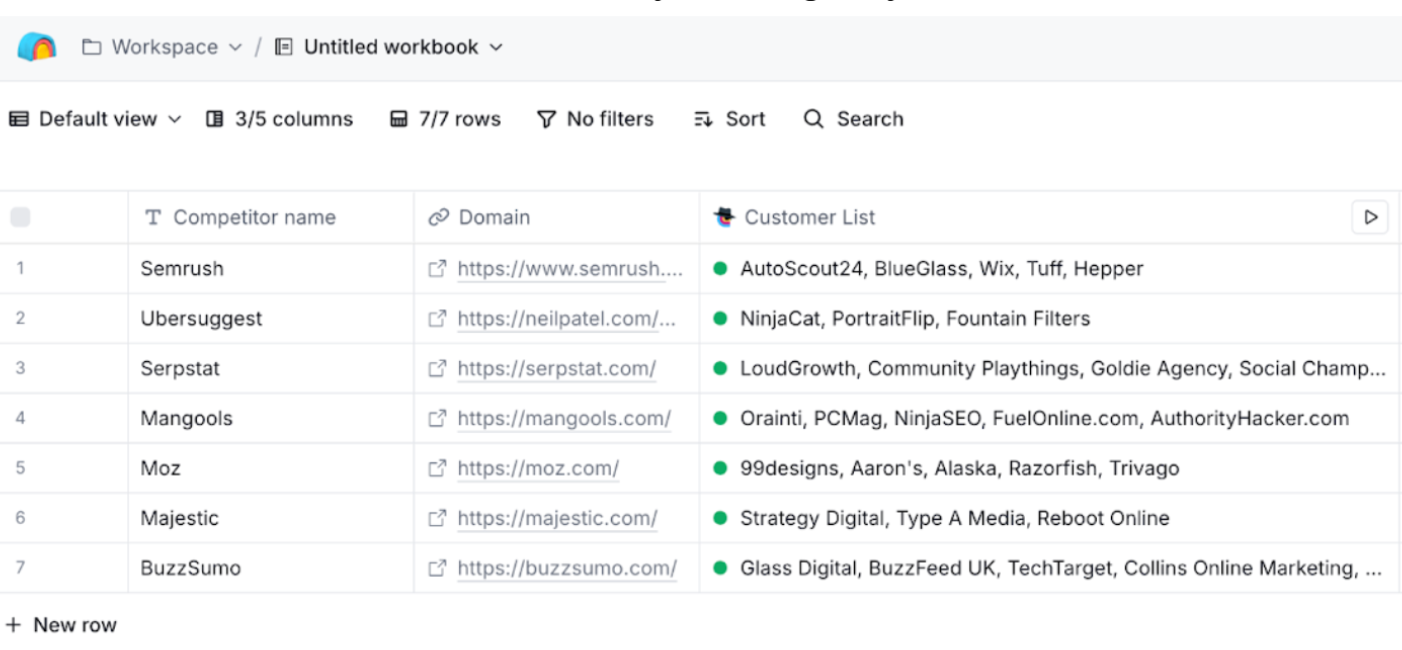 To prepare for outreach, enrich the list by adding key decision-makers and their work emails.
To prepare for outreach, enrich the list by adding key decision-makers and their work emails.
Validating and Cleaning Lead Data for Greater Outreach Accuracy
If your lead data is outdated or inaccurate, your ABM campaign will suffer – expect high bounce rates, wasted resources, and missed opportunities.
Clay helps you avoid all that by validating email addresses, removing duplicates, updating lead data in real time, and running custom workflows to clean and structure your lists.
Brian Swichkow used this approach in his Reddit-focused ABM campaign, in which he built a bot to scrape Reddit ads and identify companies actively advertising. His goal: pitch his team as Reddit marketing experts.
All ad data was stored in Airtable and then sent to Clay via webhook.
Since many URLs were redirects or tracking links, Clay was used to extract the true end destination URL, which was then used to identify the company behind the ad.
How to Do This in Clay?
→ For validating email IDs:
- Go to any Clay table. Click on ‘Add column” and then “Add enrichment.” Search for validate email in the search bar, and you’ll see several integrations that can verify emails.
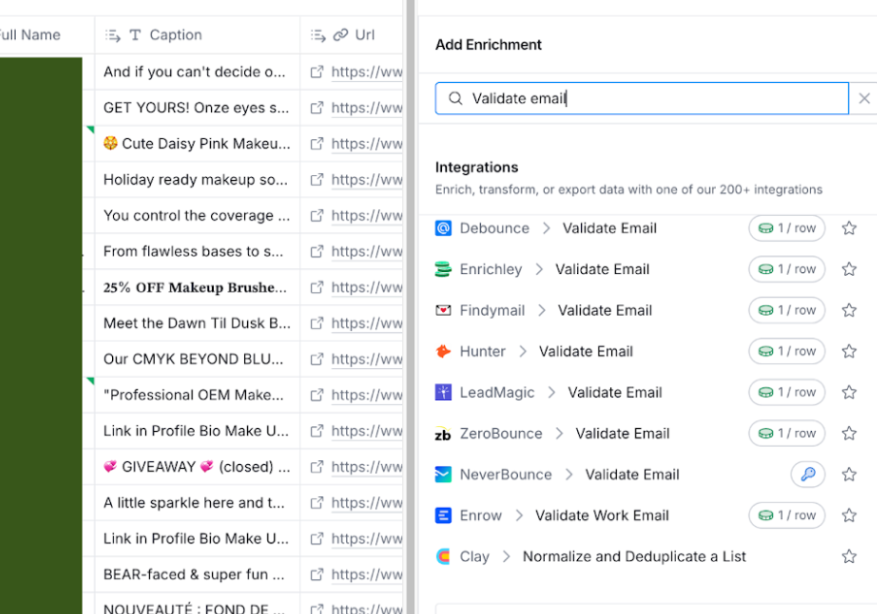
- Click on any one integration – I went with ZeroBounce. Click on “Continue to add fields” and then “Save.”
- The integration will then run and will show you which emails are valid and which aren’t.

→ For updating data in real-time:
- Click the icon at the bottom right of your Clay table to enable auto-update.
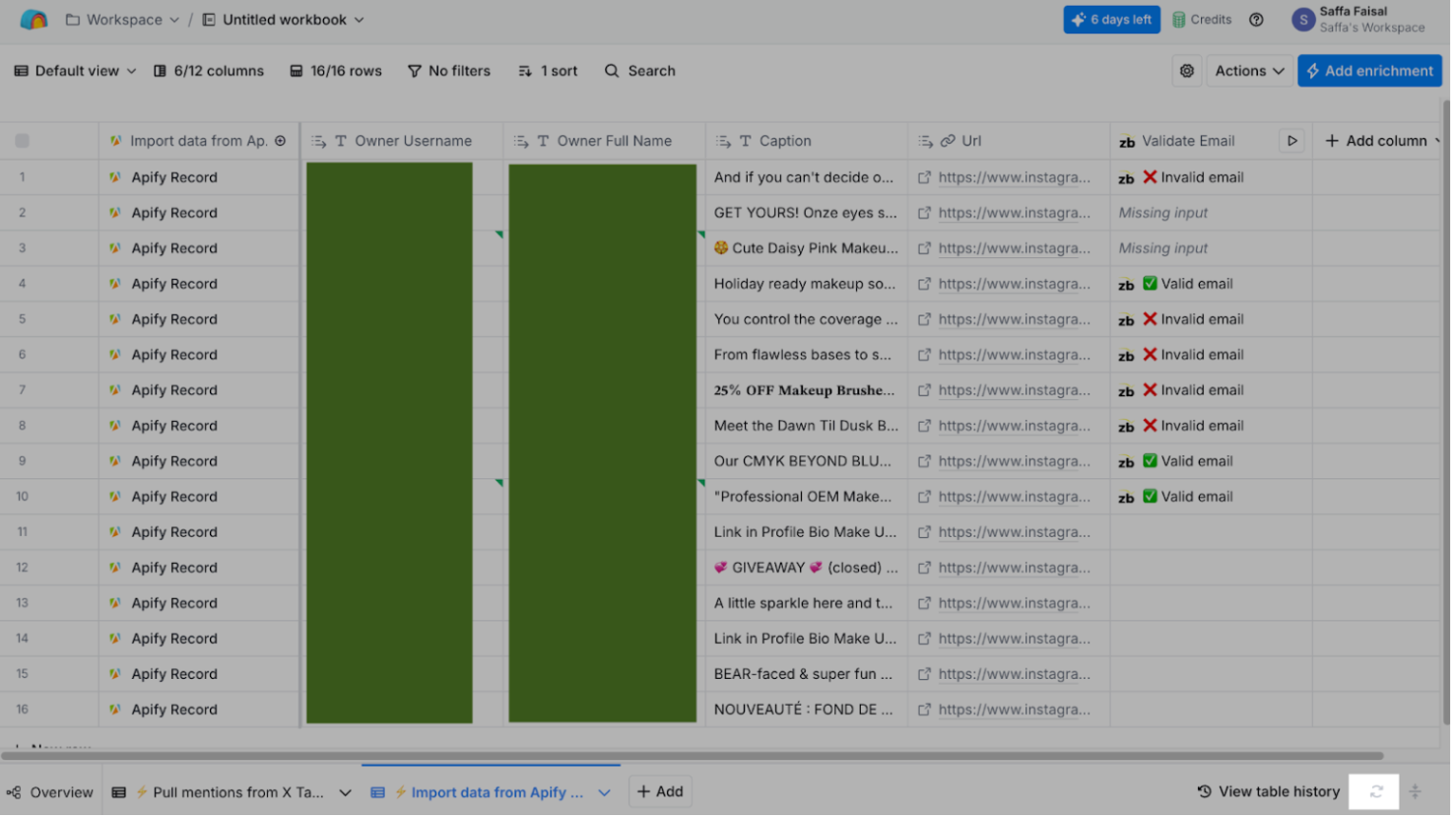
- Click on “Turn on table” to automatically update your lead information.

→ For removing duplicates in data:
- Click the icon at the bottom right of your Clay table to enable data deduplication.
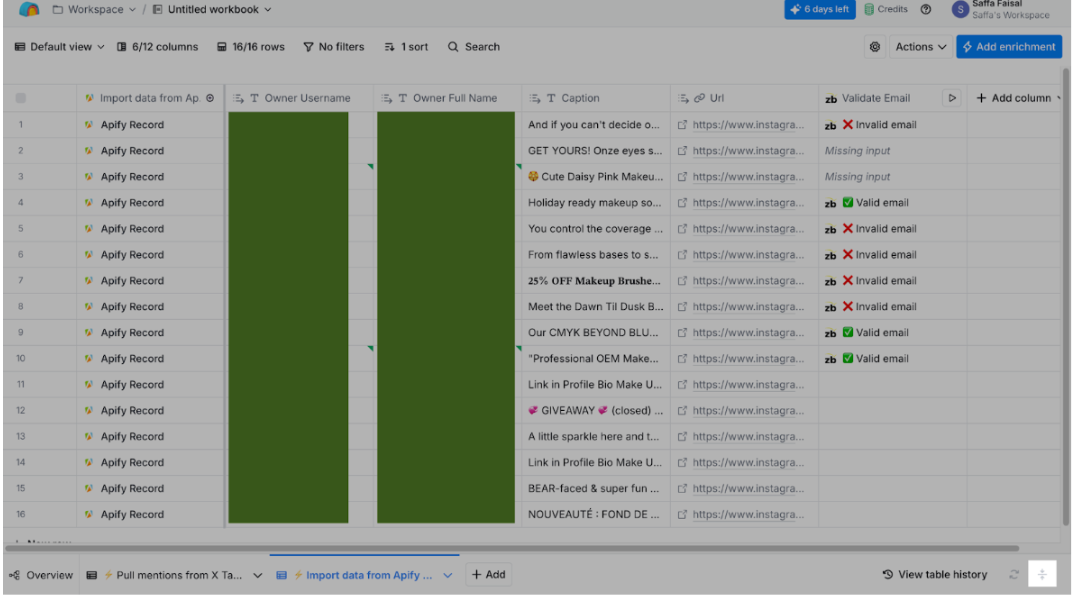
- A pop-up will appear. Toggle on automatic deduplication, choose the column to remove duplicates from, and save your changes.

Enriching Leads with Additional Data Points
Clay gives you access to 100+ databases in one place, so you have all the lead data you need without switching tools.
It offers Waterfall enrichments that let you search multiple data sources one after the other until you find a valid match. This way, you get the best lead data without wasting time or credits.
When I asked Zazie Productions how they use Clay enrichments for ABM, here’s what they shared:
Zazie Productions gathered lead data from Crunchbase, LinkedIn Sales Navigator, podcast directories, and Google search exports.
The list was uploaded to Clay, where leads were tiered based on employee count, website traffic, and job titles.
They used Clearbit, Hunter.io, and Apollo within Clay to enrich records with:
- Work emails
- Company HQ location
- LinkedIn URLs
- Estimated budget size
- Records with fewer than three valid enrichment points were labeled “Partial” and excluded from Phase I outreach.
Another Clay expert, Bill Stathopoulos from SalesCaptain, uses integrations with Clearbit, Crunchbase, and Hunter to enrich leads with:
- Company size
- Industry
- Funding stage
- Tech stack
How to Do This in Clay?
→ The amount of enrichments you can add to your Clay table is low-key endless. Let me show you how to add LinkedIn URLs for a sample list of companies.
- Go to your Clay table. Click “Add column” and then “Add enrichment.”
- Search for the LinkedIn URL enrichment and select it. You can also use Claygent to find specific info or just use a saved template if available.

- Choose the relevant inputs to proceed. Since I need to find LinkedIn URLs, I went with company domains. Click on “Save” to see your list.
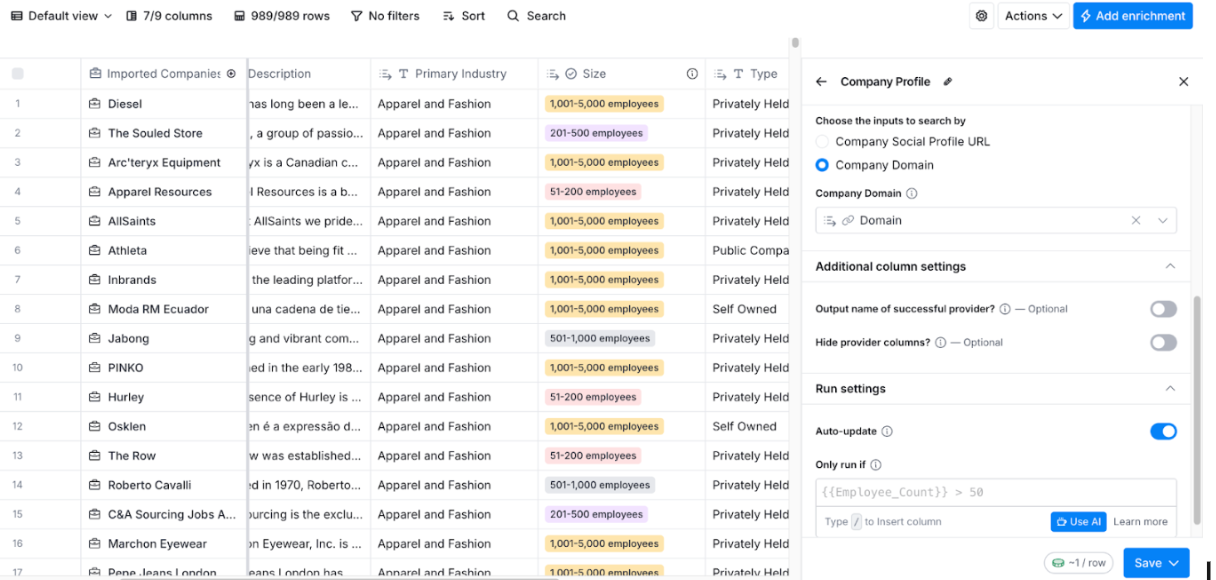
And that’s it! Your table now includes LinkedIn URLs that you can plug into your ABM campaign. 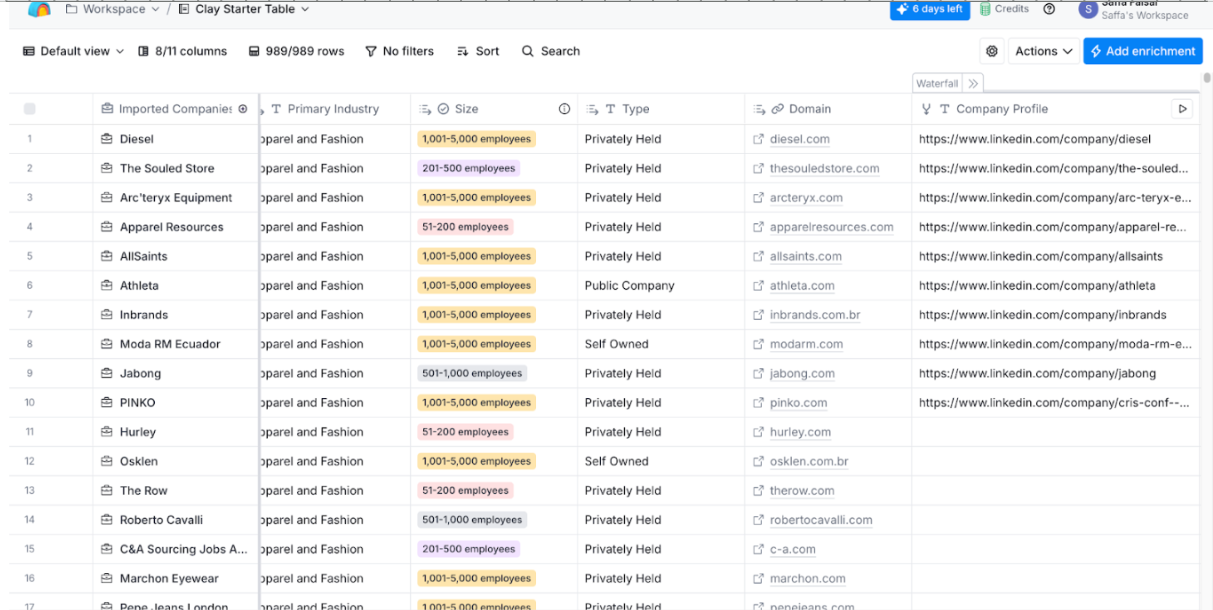
Scoring Accounts to Qualify Leads with the Highest Intent
In the above example, Zazie Productions tagged companies as “Partial” when key enrichments were missing. This is a smart use of account scoring, which can be used not just to qualify high-intent leads but also to filter out poor fits.
Ultimately, it makes sure you reach out to the right people and your ABM efforts don’t go to waste.
Clay lets you easily create your own lead scoring model using data like company size, tech stack, job titles, website activity, etc. You can assign weights/scores to each data point and automatically view your best-fit leads.
In my chat with Brian Swichkow, he shared his lead scoring model, which ranked each lead based on how likely they were to be a decision-maker. He used two scoring criteria: job titles and advertiser revenue. C-suite executives at companies with the highest ad spend scored the highest.
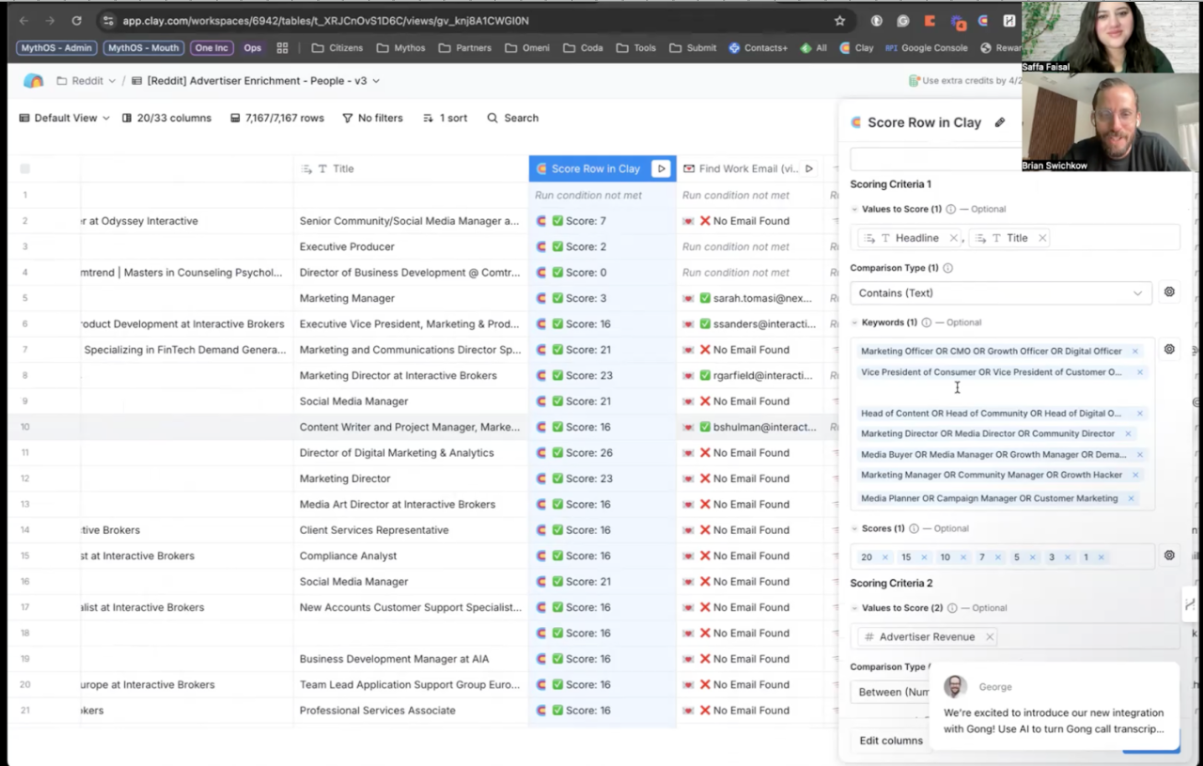
While Clay offers full control to customize your scoring logic, it can be complex to set up.
ZenABM simplifies the process by scoring accounts using real-time LinkedIn engagement signals, like ad views and clicks, and syncing that intent data directly to your CRM. This helps you prioritize leads who are actively showing buying interest and easily push those insights to your BDRs.

How to Do This in Clay?
→ The main thing you need to do is to define your scoring criteria.
For this section, I created a list (in Clay, ofc) of employees in the software development space.
My goal is to target senior employees at venture-backed companies. Anyone who scores 80 or more gets included in my outreach.
- In your Clay table, add the enrichment “Score Row in Clay.”
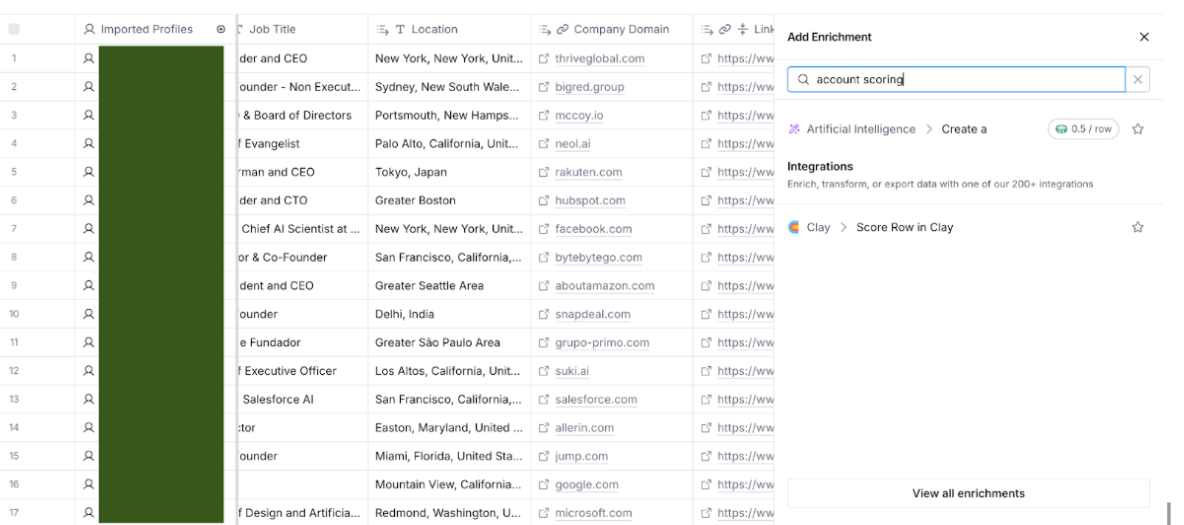
- Set the number of scoring criteria. I’m using two: job title and venture-backed status.
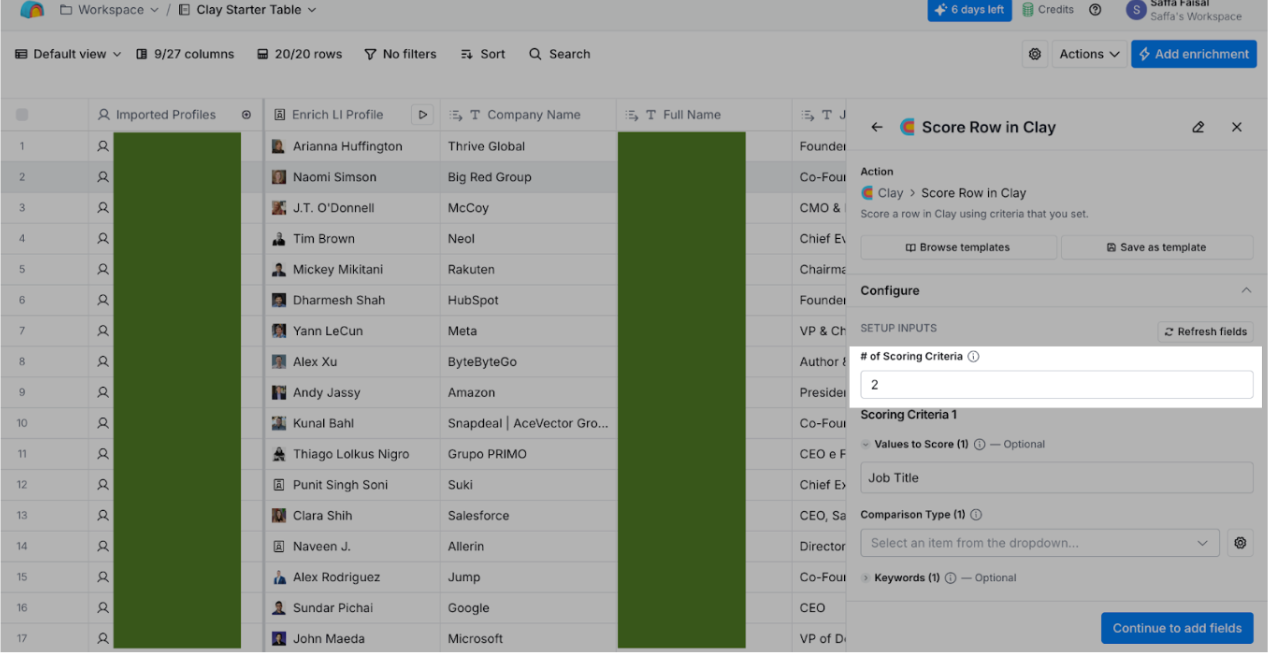
- For each criterion, select the relevant column under “Values to Score.” In the “Comparison Type” field, choose how to match values. I used “Contains” but use “Equals” for an exact match. Then, list your keywords in the “Keywords” field and assign a corresponding score to each. Since C-suite roles are my top priority, they get a score of 50 each. Manager-level roles are lower priority, so they get a 10.
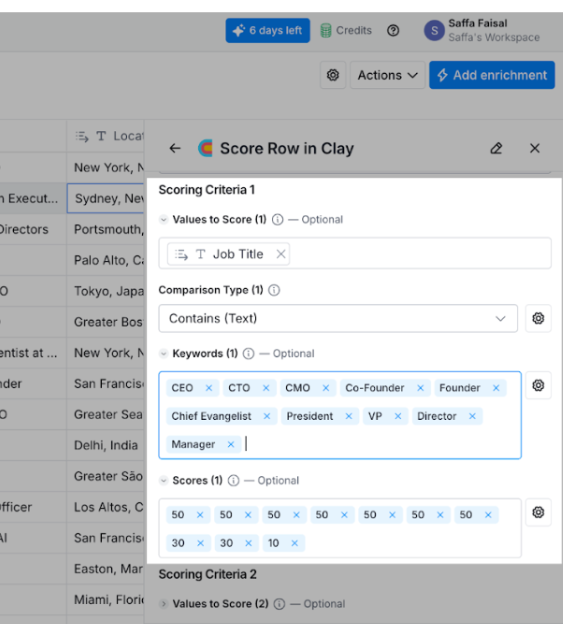
- Repeat this for the second criterion. Since “venture-backed” is a boolean column, I entered True and False in the “Keywords” field and assigned scores accordingly. Once all details are filled in, click “Save” and run the enrichment.
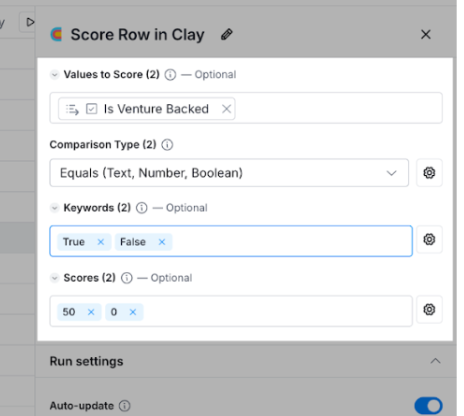
You’ll now see lead scores in your table. Anyone scoring 80 or above will move forward in my campaign. 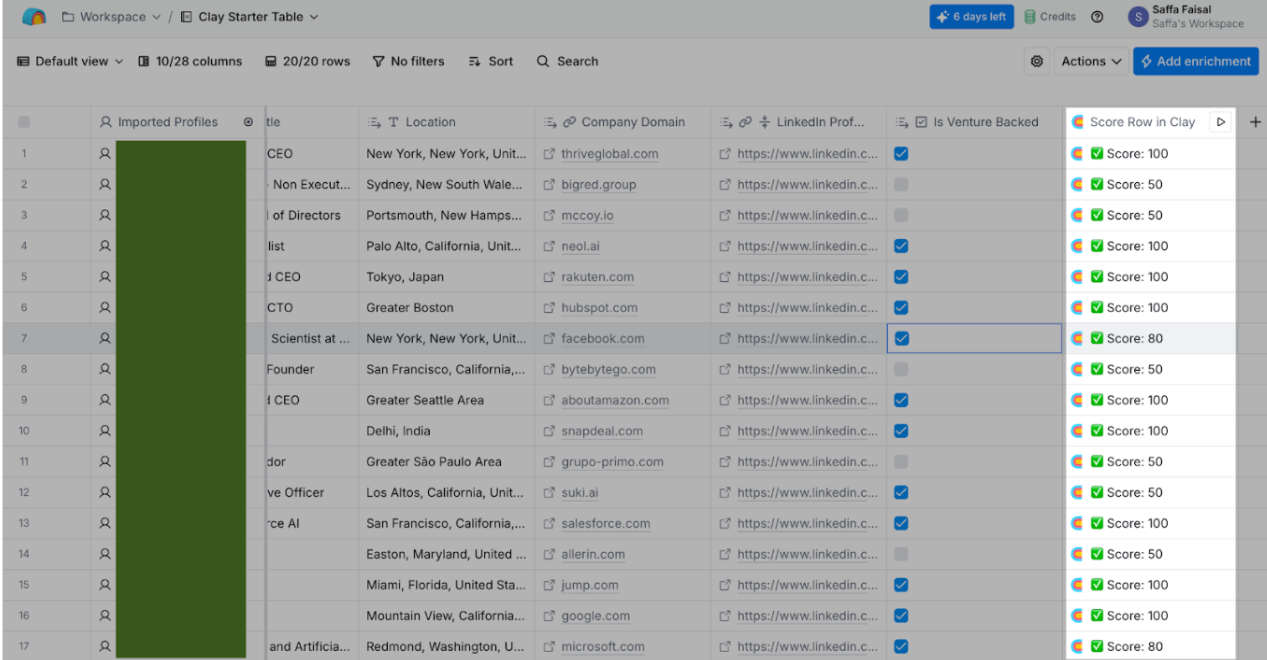
Creating Personalized Messages to Increase Responses
The level of personalization Clay offers explains why it’s a fan favorite among ABM teams. I’ve already touched on how its wide range of enrichments powers targeted outreach, but it is Clay’s dynamic attributes that truly enable personalized messaging at scale.
Aamir Qutub from Enterprise Monkey follows a similar use case.
The first phase of his personalized ABM campaign in Clay begins with creating hyper-targeted lead lists that combine data from LinkedIn, Crunchbase, and company websites. The list is then enriched with job titles, tech stacks, and contact details to enable more personalized outreach.
The first phase of his personalized ABM campaign in Clay begins with creating hyper-targeted lead lists that combine data from LinkedIn, Crunchbase, and company websites. The list is then enriched with job titles, tech stacks, and contact details to enable more personalized outreach.
In the second phase, Aamir uses ChatGPT inside Clay to summarize what each company does and uncover potential pain points. From there, he auto-generates tailored email copy for each persona, which flows straight into the email sequences.
This is a simple, versatile use case that most companies can apply to their ABM workflows.
Some companies, like Verkada, go above and beyond.
Verkada’s growth team found that ABM campaigns performed better with personalized landing pages. Initially, one person manually created 600 of them – until they left, and the process stalled. But then they integrated Clay with Webflow and created a workflow that generated hundreds of personalized pages with a single click.
Below is an example of such a landing page they made for Steve Madden:

How to Do This in Clay?
→ Verkada’s use case for personalization may not be for everyone. But if you’re curious about how to create personalized email copy at scale (like Aamir did), read ahead.
→ I’ve put together a sample list of top execs at venture-backed software companies. My goal is to reach out and pitch them my customer onboarding tool, OnboardingX. I’ll be generating and personalizing each email using three key attributes: the person’s name, their company, and their location.
- To get started, add the “ChatGPT: Generate text” enrichment to your Clay table.

- In the prompt field, write out in clear instructions what you want ChatGPT to create. Use a forward slash (/) to pull in dynamic fields like name, company, or location. Then click “Generate my prompt” to get a detailed version you can review.
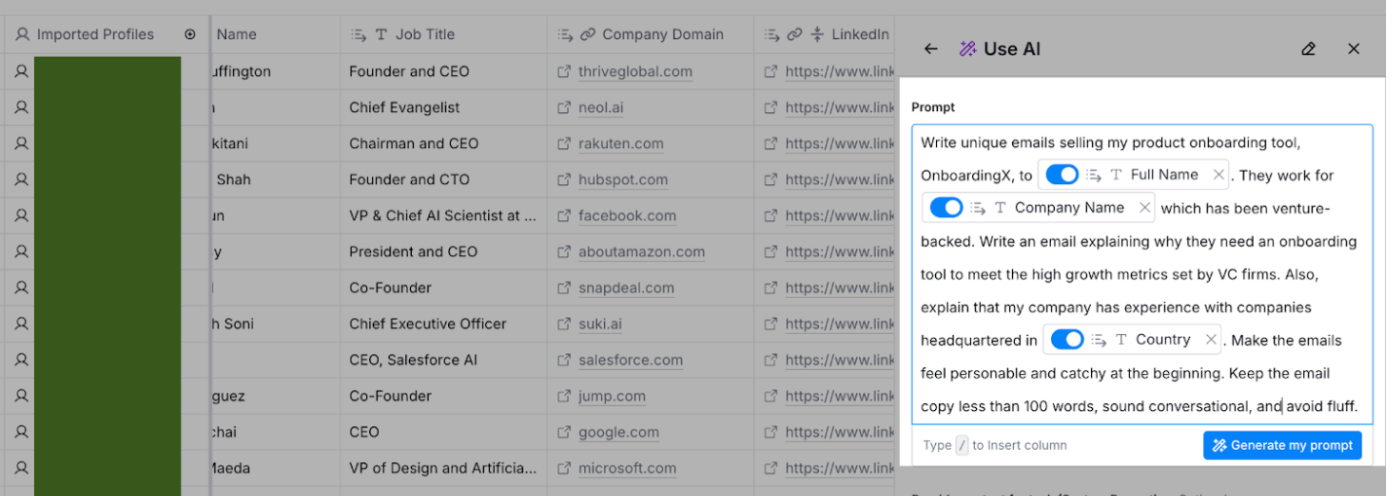
- This will open a new pop-up window. Click on “Accept prompt” if you’re satisfied with it.
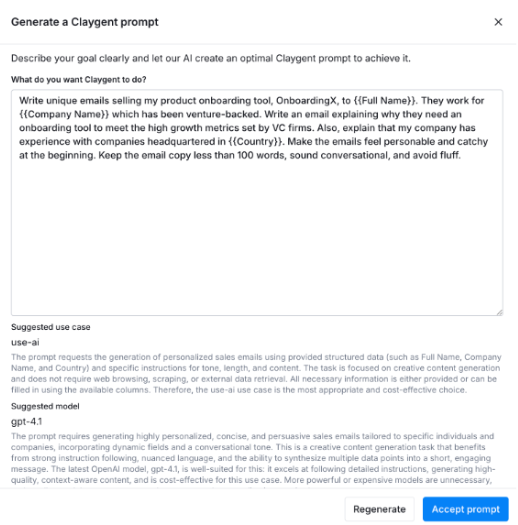
- Clay will automatically add two new columns to your table: one for the email subject line, and one for the email body.
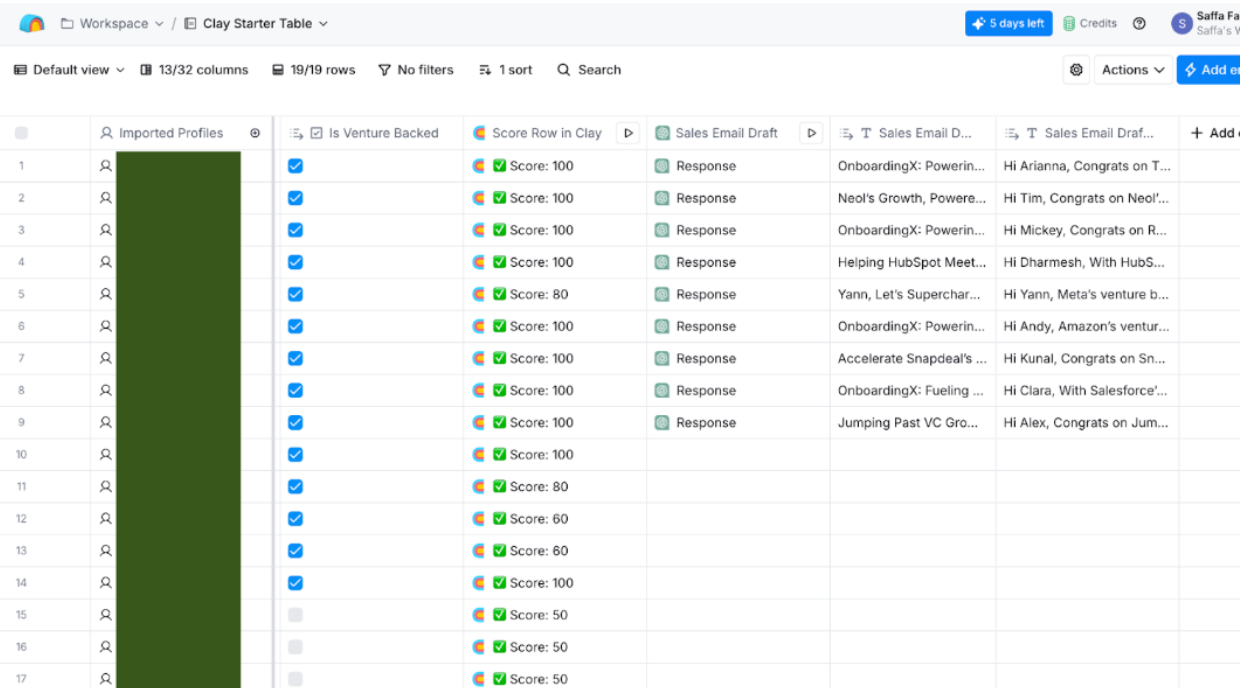
- Expand on any row in the “Sales Email Draft Subject” column to reveal the subject line.
- Expand on any row in the “Sales Email Draft Copy” column to reveal the email copy. Make changes to the prompt if needed and run the enrichment again.
- All that is left now is sending emails to your leads. Connect your Clay account with an email sequencer, like Outreach or Lemlist, to send emails or integrate it with your CRM to push emails from there.
Orchestrating End-to-End ABM Workflows Within Clay
Clay acts like a central nervous system of an ABM campaign. Sure, you’ll still need other tools for specific tasks, but Clay pulls everything together in one place. This will save you a ton of time and energy as you don’t need to jump between different tools, tabs, and messy spreadsheets.
All the experts I spoke to for this article used different tools for specific parts of their ABM campaigns (mainly sourcing leads). But the actual operations were all run inside Clay.
One such Clay expert is Steven Brady.
Steven built an ABM campaign to reconnect with ex-colleagues from Square who now match his ICP. He used LinkedIn Sales Navigator to create the list, Trigify to track social intent, and Clay to enrich each lead with 20+ data points. The information was then ready for lead scoring, and personalized messaging and outreach.
His exact workflow is below ↓
Steven Brady’s Step-By-Step ABM Workflow
- Steven created a targeted list of around 50 first-degree connections from his time at Square, all of whom now fit his ICP (sales and marketing leaders, VCs, or founders). This was done via LinkedIn Sales Navigator.
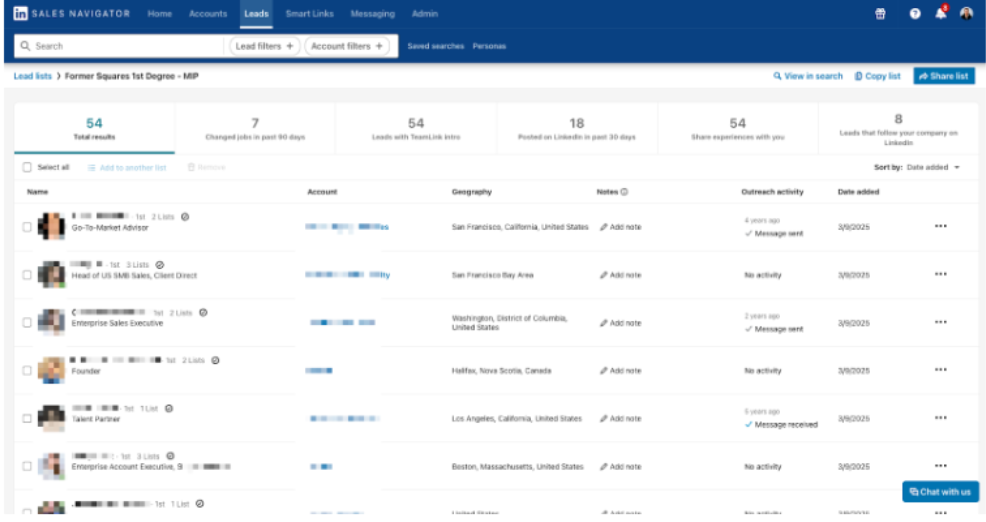
- Steven used Trigify.io to track social intent signals. He uploaded his target list to Trigify, which monitored when individuals engaged with specific content on LinkedIn based on his trigger keywords.

- The data from Trigify was pushed into a Clay table via webhook. Clay enriched this data with 20+ additional data points like LinkedIn profile description, industry, headcount, and verified work email.

- This enriched data was then used to assign a lead score, create tailored messages, route leads to relevant email or LinkedIn campaigns, and update CRM records.
How NOT to Use Clay for ABM?
When I asked a few experts if there were any use cases that didn’t work for them in Clay for ABM, surprisingly, they didn’t have anything bad to say. They considered Clay as an experimentation tool and while some experiments did fail, they were happy with it overall.
That being said, they did share some general mistakes that people make that can hurt their chances of success:
❌Starting with Clay Right Away
Before jumping straight into building your Clay campaign, it’s worth pausing to think about the end goal. Why? Because Clay is like a bottomless pit. There is so much data at your disposal that it is easy to get overwhelmed.
Patrick Spychalski suggests starting with writing email copy. Not the version you plan to scale, but a personalized email you’d actually send to someone in your ICP. Now, think of the data points you need to personalize the emails. Those data points become your foundation and shape how you structure your entire ABM campaign.
❌Excessively Personalizing ABM Campaigns in Clay
Clay gives you access to an incredible amount of data, but just because you can use it all doesn’t mean you should. There’s a fine line between sending a personalized message and coming across as downright creepy.
If you mention too many personal details at once, like your ICP’s latest podcast appearance, a tool they just started using, and their company’s new funding round, it can feel invasive. Instead of making the person feel understood, it might make them feel uncomfortable.
Use personalization to show business relevance, not to prove how much research you’ve done. Practice digital empathy, folks!
❌Adopting a Spray and Pray Method
Clay makes it possible to automate lead sourcing and personalization at scale. And when I say scale, I mean thousands, even tens of thousands, of hyper-personalized emails a day, when paired with the right sequencing tools.
But that doesn’t mean you should turn a blind eye to it and target anyone and everyone. Not only will that be hella expensive, but it will hurt your brand repute.
Regarding this, Tarek Reda from Blue Pencil Marketing says, “Companies should make their campaigns more signal-based i.e., having a valid reason to reach out because the prospect has taken an action that warrants your outreach.”
In one of their ABM workflows, Tarek’s team only reaches out to people who’ve viewed their LinkedIn profiles or engaged with their posts, so the outreach feels natural, not cold.
Brian Swichkow is another advocate for sending only the necessary amount of emails. At one point, he was sending about 50 emails a day for like 5 accounts. With a 60% response rate and 10%–25% conversion rate, there was no need to send more.
❌Going All Out with Your Clay ABM Campaign
A common mistake when using Clay for ABM is jumping in too fast and trying to do too much at once. It’s easy to get excited about what Clay offers and you may think you need to use every feature right away. But that can make things complicated and hard to manage.
Steven Brady points out, “The beauty of using Clay as an orchestration layer is that you can start simple and expand as you get comfortable. You don’t need to rebuild your entire sales and marketing stack, just connect what you already have more intelligently.”
Final Takeaways
I’m sure I’ve made a strong case for using Clay for your future ABM campaigns. I mean, can you blame me? It offers almost all the essential features for a successful ABM execution.
That being said, you’ll also want a solid tool to track your ABM campaign’s success. If you’re focusing on LinkedIn for your ABM, ZenABM is worth checking out. Its ready-made dashboards make it super easy to view key metrics like awareness rate, interest rate, total pipeline, and ROAS.
IMO both tools are worth checking out. Both Clay and ZenABM have free trials (Clay also has a limited free plan), so you can try both tools out before committing.



